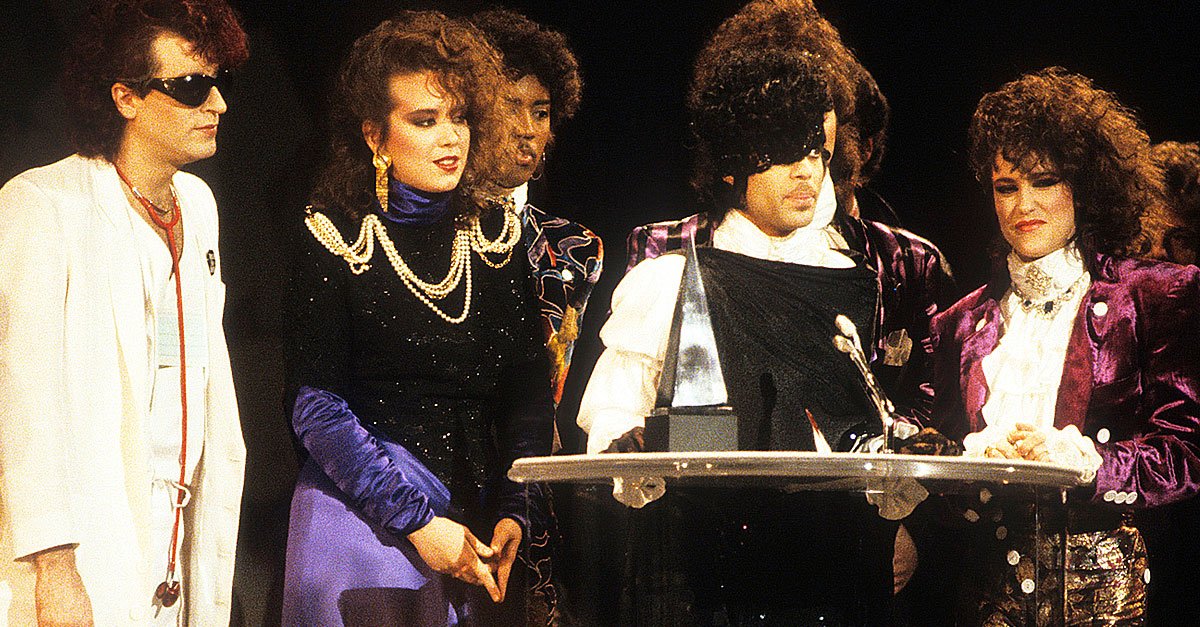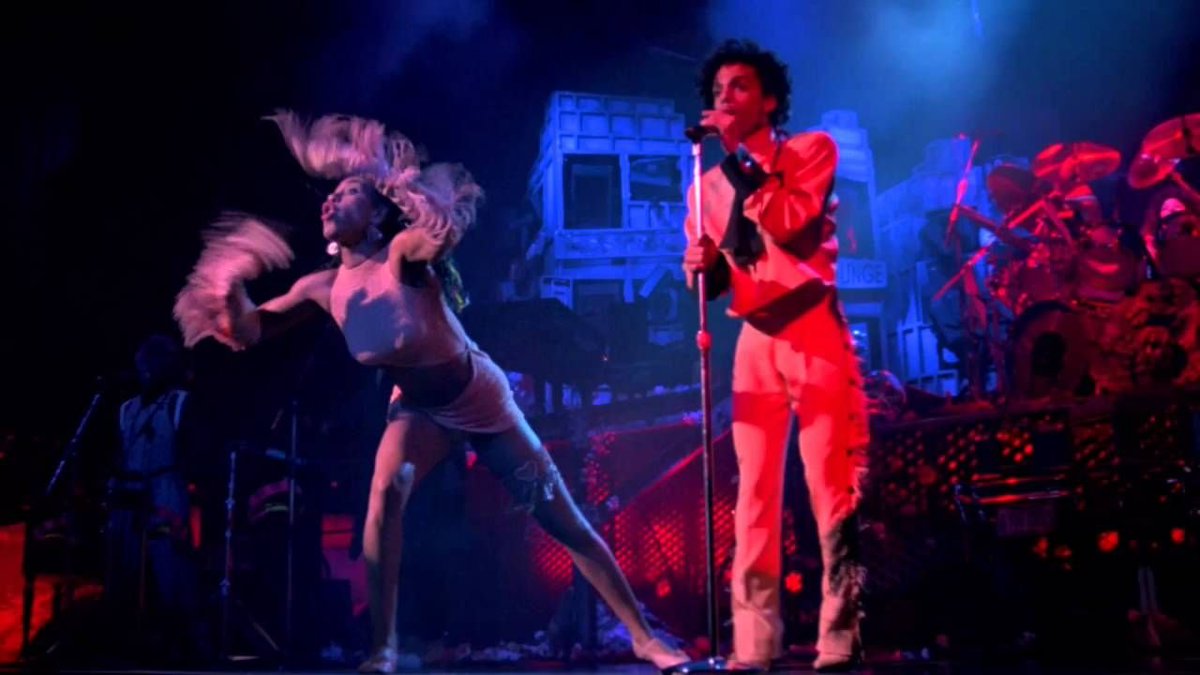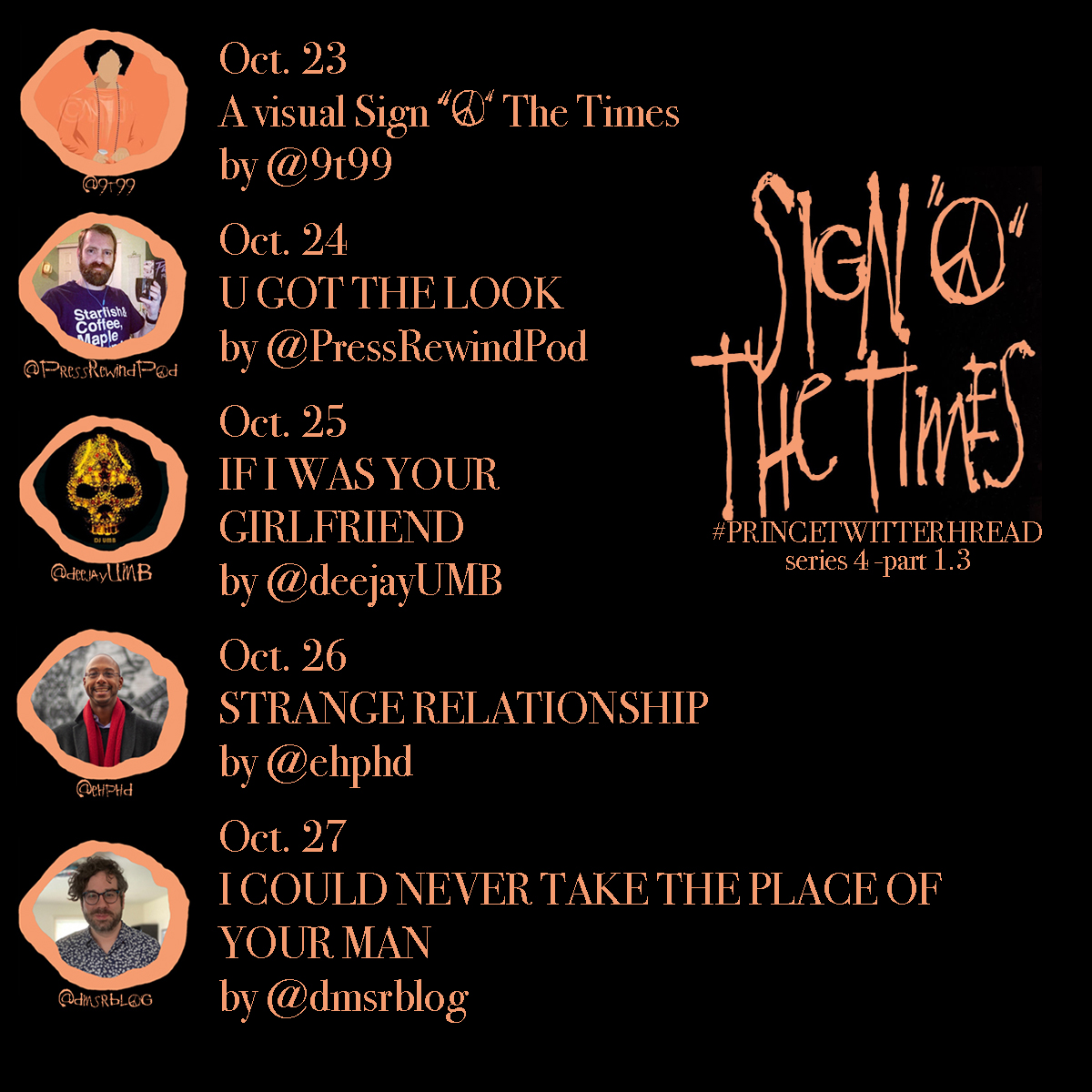
Welcome to another #PrinceTwitterThread series, curated by @DeejayUmb and @EdgarKruize
Everyday is a thread by a Prince superfan on a specific song, this time covering the Sign O The Times DELUXE release. My thread offering is on funk dance anthem “Housequake”.

Everyday is a thread by a Prince superfan on a specific song, this time covering the Sign O The Times DELUXE release. My thread offering is on funk dance anthem “Housequake”.


You will need to have listened to the song first to fully experience this take, so here you go:
...and already, I have suckered you.
That is the 1987 version, the version you know and grew up with. I hope you enjoyed it because you can now promptly throw that version in the trash.
That is the 1987 version, the version you know and grew up with. I hope you enjoyed it because you can now promptly throw that version in the trash.
The remastered 2020 version crackles with new energy, revealing all kinds of ear candy that has been buried under a muddier mix for the last 33 years.
Here’s the new mix:
Here’s the new mix:
Musically, right away we hear some fascinating things going on that were largely missed before now thanks to the remaster, things that even if you heard them hit different now. The panning of the drums in the first 10 seconds is gone and replaced with a fuller blend.
The phased reverb stabs in the background are more obvious. In short, the ear candy that Prince put into the song has been polished and brought more fully into the mix, so much so that it sounds like new tracks have been added, when in fact they were always there.
And it doesn’t matter how you listen to these versions - earbuds, car speakers, tin cans - the difference is jaw-dropping.
The day after the announcement of the Revolution’s disbanding, Prince goes into the studio to lay the first tracks of what would become Housequake.
This is about the only predictable part of the Housequake story.
This is about the only predictable part of the Housequake story.

Upon the heels of such an announcement, Prince would have been eager to compose something that shows his formidable skills as a one-man band, and Housequake fits the bill. 

Put it like this: If it wasn’t Housequake, it was going to be something like it. Something big, brash, filled with lots of tracks, densely produced, and hit driven. 

And like a party.
It is not irrelevant that his personal life was not in the best place at the time, between cutting loose his old band and fiance, Prince, notorious for writing a song when a conversation or therapy would do, was destined to write this track on that day, really.
It is not irrelevant that his personal life was not in the best place at the time, between cutting loose his old band and fiance, Prince, notorious for writing a song when a conversation or therapy would do, was destined to write this track on that day, really.
Let us also not discount the many songs he was working on to prove the efficacy of his Paisley Park label on top of all that. 

While Prince is easily 25% James Brown in almost every way - dance style, dress, business acumen, influence, pride - we have to talk about how much of “Housequake” owes to Brown and how much of it doesn’t. 

It’s generally held that HQ is basically a Brown riff: big band sound, funky backbeat, a call to dance, inaudible grunts and screams as musical punctuation, a bit of Black church passion. All true.
That said, there are ingredients worth unpacking that are not Brown reflective.
That said, there are ingredients worth unpacking that are not Brown reflective.

HQ is one of Prince's attempts to sell (figuratively) audiences on a new dance (definitely a tip to Brown, who made a career of selling (literally) dances disguised as records: Papa’s Got a Brand New Bag, Get Up Offa That Thing, and about 50 others.)
Prince has arguably done this since his first record (“Soft and Wet” 1978), and inarguably since his second (“Sexy Dancer” 1979).
What is it about a new dance that compels him so?
What is it about a new dance that compels him so?
A new dance in the modern music business is certainly at least a business move, the right one at the right time creating a cottage industry around itself (The Electric Slide, Macarena). This doesn’t seem to have ever been a motivation for Prince regarding any of his dance songs. 

Of the dance songs Prince has ever composed, very few of them have been released as singles in such a way as to capitalize in similar fashion. His most obvious one isn’t even technically a Prince song, but a Time song, “The Bird”.
(Probably because, ultimately, only Prince dances like Prince. He’s not actually ever the best case for a new dance that anyone can do. Bruh wild.)
AND YET.
While a b-side (the flip of “U Got The Look”), HQ otherwise conforms to a single release. It has multiple edits/mixes, and depending on which version of “U Got The Look” you bought, you could have ended up with a radio edit version of the "7 MoMinutes" mix.
While a b-side (the flip of “U Got The Look”), HQ otherwise conforms to a single release. It has multiple edits/mixes, and depending on which version of “U Got The Look” you bought, you could have ended up with a radio edit version of the "7 MoMinutes" mix.
The point is, while HQ was not technically a single, it was treated like one in every other way. Prince knew he had lightning in a bottle with that song. There are several theories as to why he didn’t release it as a proper single.
My personal theory is that it shores up the impression that he can do any genre of music. As the third release from SOTT, “U Got” was preceded by "Sign "☮" the Times" (b/w La La La He He He) and “If I Was Your Girlfriend” (b/w “Shockadelica”).
If you weren’t compelled to buy the SOTT LP after hearing those 6 songs, you simply don’t like #Prince.
Also, I will never not mention the English band the Art of Noise when talking about Prince post-1985, and it is because he so clearly was listening to what they were doing sonically. 

While no one seems able to confirm whether or not he liked what they were doing - glitch as rhythm, samples as instruments - there should be no debate as to whether or not he unpacked what they were doing.
Those light noise stabs around the 14 second mark are typical AoN touches at the time.
Considering Black kids all over the US were breakdancing to noisescapes like “Close (To the Edit)” and “Beat Box”, it’s not a reach to suggest there were several favorable listens by Prince of the AoN catalog. (I make a similar case about Batdance”.)
Despite their non-traditional arrangements and ingredients, those AoN joints were club jams, even if no one really knew how to dance to them except Black teenagers, who literally invented dances to go with songs like those.
Kraftwerk, anyone? I mean, this is what we were rocking to in 1984, 2 years before HQ would be recorded:
Point: Prince uses environmental records, samples, and rhythmic stabs in ways that are orchestral, but wildly so. Another good example of this is from half of The Black Album...
...particularly “2 Nigs United 4 West Compton”. He uses it in a more ornamental way on HQ, but it’s there. Peep at 5:52.
In fact, HQ is a bit of a crossroads song stylistically for Prince. It has elements of what has come before, while presaging what is to come.
One the one hand, there are still traces of Parade’s spooky organs and a ton of stacked vocals across much of his range, but also the horns he would expand and amplify on later albums, as well as the jam aesthetic that would dominate his 1990s and 2000s output.
He would stop pretending to be a jam band and start being one, and HQ is a shift in theory, if not in execution. It is where he is going. See you when you get there.
The best placement of HQ in an album sequence was on the aborted mid-86 “Camille” effort, when the song came blasting in the number two spot, right after the workout of “Rebirth of the Flesh”. 

That Prince opted to keep it there is telling when you consider what it’s sandwiched between in those lineups: “Play in the Sunshine” on the front,” Ballad of Dorothy Parker” on the back.
SOTT needed to bring a hardcore funk tune in after the moody “Times” and rock-infused “Play in the Sunshine”. Stylistically, it was time to pull the trigger on some unapologetic at that point on the record.
HQ effectively introduces the world to a new alter ego, Camille, who in mid-86 was well on their way to scoring their own album until Prince decided to repurpose the tracks for Crystal Ball and then SOTT. 

Much has been made of Camille as a character and what they represent. I’ll let you do the digging since we’re all here on the interwebz anyway. Just know that 3 tracks from Camille made the cut to SOTT, and if it had been released, it would have been an incredible record.
We wouldn’t have SOTT, and let’s be clear: SOTT is Prince’s best record. There was a lot of risk in giving up/expanding the Camille record, and then shaving the effort down to get to SOTT.
Fortunately, unlike a lot of Prince’s vaulted sequences, Camille lives as a character and an album, if you’re willing to piece it together.
(Psst: here you go. I mixed it for you.)
youtube.com/playlist?list=…
(Psst: here you go. I mixed it for you.)
youtube.com/playlist?list=…
Lyrically, HQ is also a softball case for Prince as poet.
As a poet myself, I’m looking to one day sit down and really drill into what Prince does lyrically that makes him a bit of a poet’s poet, but HQ has some nice devices at play.
He drills into the metaphor of earthquakes:
As a poet myself, I’m looking to one day sit down and really drill into what Prince does lyrically that makes him a bit of a poet’s poet, but HQ has some nice devices at play.
He drills into the metaphor of earthquakes:
In your funky town (housequake)
And the kick drum is the fault
...
Does anybody know about the quake? (yeah!)
Bullshit!
You can't get off until you make the house shake
...
And the kick drum is the fault
...
Does anybody know about the quake? (yeah!)
Bullshit!
You can't get off until you make the house shake
...
Prince loves a good metaphor, and he isn’t above running an analogy into the ground. And trust me when I say that it’s fascinating to observe him stripping away his most common poetic device, rhyme, and leaning harder into metaphor alone.
Speaking of which: “What was that? Aftershock”
Here I want to second the case presented in the first thread of this series by @CaseyRain: that Prince, having been in L.A. during the aftershock of a an earthquake...
Here I want to second the case presented in the first thread of this series by @CaseyRain: that Prince, having been in L.A. during the aftershock of a an earthquake...
...(recording “Everybody Want What They Don’t Got” and “The Cross” at Sunset Sound on July 13th, 1986), applied the resonance of that life-altering experience to his music at the time. Casey mentions it as part of the context stew of SOTT, but it appears here in concrete ways.
There are a couple of official remixes floating around, a couple of which appear on the SOTTDeluxe set. The one worth tracking down is “Housequake (7 minutes MoQuake).”
It’s mostly an instrumental mash-up of the funkier sections of the song with extended solos on trumpet, guitar, and sax mixed with some extremely Funkadelic informed synth riffs. I like this mix mainly because it showcases Prince’s appreciation of and facility with the blues.
The guitar playing is some honest Chicago electric blues picking. We’re talking hardcore tonal pickers like Luther Allison and Buddy Guy. Players who believe in “singing guitar” styles.
And if you think Prince never listened to Texas’ own Freddie King record, you’re wrong.
(Favorite part: Go to 7:32)
(Favorite part: Go to 7:32)
In conclusion:
Prince played Housequake live for much of his career since its inception: from March 87 until March 2016. It was one of his most played tunes live in a 29 year span. Housequake never seemed old or dated. It was always a bit of uncut funk that worked in any room.
Prince played Housequake live for much of his career since its inception: from March 87 until March 2016. It was one of his most played tunes live in a 29 year span. Housequake never seemed old or dated. It was always a bit of uncut funk that worked in any room.

Hope you dug this dive! If you liked my thread, I have a whole book of Prince essays waiting on you: “Prince and Little Weird Black Boy Gods”. Dig if U will!
amazon.com/Prince-Little-…
amazon.com/Prince-Little-…
Come back to the hashtag #PrinceTwitterThread tomorrow to catch a take on the next SOTT song, “The Ballad of Dorothy Parker” by @arrthurr , which after “Adore” is the only other song on this album I would do a thread on. And the rest of the crew: 

Thanks for hanging out! Shout out to @EdgarKruize for the dope graphics for all the threads. 

• • •
Missing some Tweet in this thread? You can try to
force a refresh











